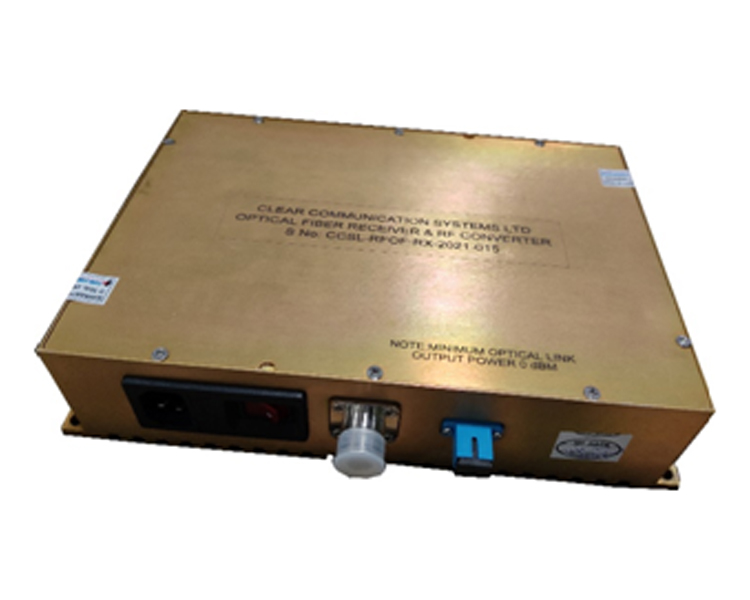RF over Fibre
Technology benefits
RF over fibre (RFoF) is a technology of converting a radio wave (RF) into light by modulating the intensity of the light source (typically a laser) with RF signal.
This is an analogue process. The light signal is then transmitted over a optical cable, which exceeds the capabilities of traditional copper co-axial cable.
RF over Fiber is communication equipment working in the optical wavelengths around of 1310/1550nm. It consist of an Optical Transmitter (Tx) that convert the RF signal into optical Signal, and Optical Receiver (Rx) which converts the Optical signal to RF signal. The Transmitter and receiver modules use low noise components to carry the low signals to distant receiver. By using these modules communications can be established from meters to few kilo meters. Transmitter and receiver modules have small form factor therefore they are easily accommodated in less space.
Advantages of RFoF are::
- Very low signal loss (less than 0.5 dB/km)
- Superior frequency response across the entire frequency band.
- Immunity to EMI and RFI.
- Security against signal interception
- Low maintenance – install and forget technology
- Simple installation
- Cost effective compared to high-end, low-loss coax cable.
Three main elements:
- Optical transmitter, to convert RF to Optical
- Fibre optic cable
- Optical receiver, to convert back to RF
Applications:
- Government and Defense – secure communications, SIGINT
- Antenna Remoting
- Satcom ground segment equipment
Signals Intelligence Fibre Links
RF over Fibre Links are used for Signals Intelligence (SIGINT) applications by Army and Paramilitary organizations. Its spurious-free performance and superior dynamic range from -100dBm to -20dBm allows small signals to be intercepted in addition to large signals. , as well as the interception of the entire frequency spectrum of the product’s band.
• 1 MHz to 18000MHz coverage
• Low-noise

